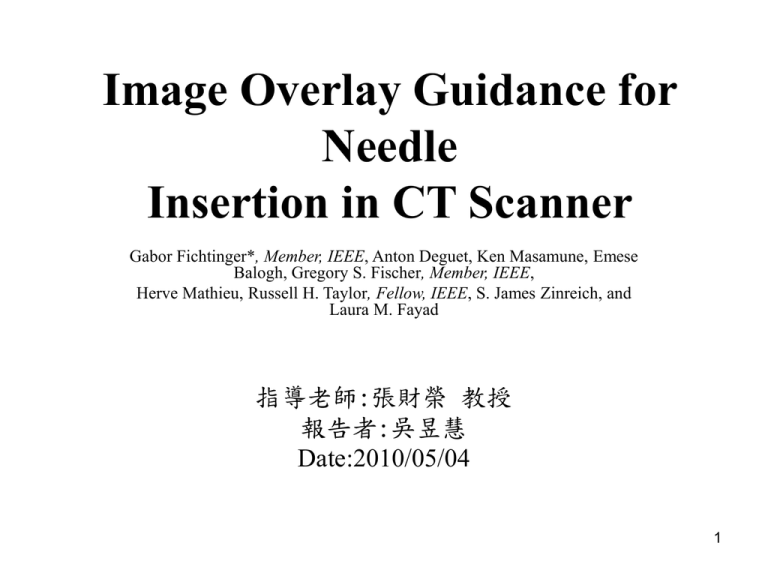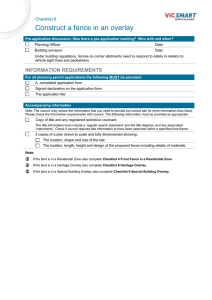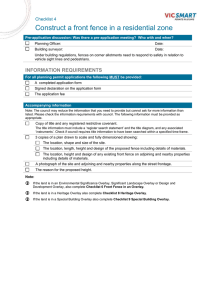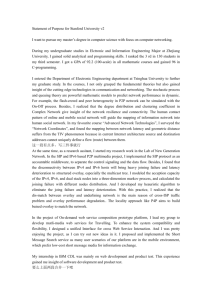Image Overlay Guidance for Needle Insertion in CT Scanner 指導老師:張財榮 教授
advertisement

Image Overlay Guidance for Needle Insertion in CT Scanner Gabor Fichtinger*, Member, IEEE, Anton Deguet, Ken Masamune, Emese Balogh, Gregory S. Fischer, Member, IEEE, Herve Mathieu, Russell H. Taylor, Fellow, IEEE, S. James Zinreich, and Laura M. Fayad 指導老師:張財榮 教授 報告者:吳昱慧 Date:2010/05/04 1 Outline • • • • Introduction and Background System concept CT image overlay device System integration – Workflow – Calibration • Experiments and Results • Discussion 2 Introduction and Background • Numerous studies have demonstrated the potential efficacy of computed tomography (CT)-guided • This frequently results in faulty needle placement attempts, especially in the case of a deep lesion adjacent to vital structures 3 • The recent appearance of real-time CT fluoroscopy has brought significant improvement to needle insertion procedures • Presently no technological in a simple, accurate, and inexpensive manner, without imparting additional radiation 4 System concept 5 • Acquire a CT slice, flip it horizontally, adjust its magnification, and then render it on the display 6 • The system creates the impression as if the CT image was floating inside the body in the correct pose and magnification • Needle placement procedures, after the entry point is selected, three degrees-of-freedom (dof) motion of the needle needs to be controlled 7 • Physician uses the overlay image to control the in-plane insertion angle (first dof) • In the axial plane marked by the gantry’s inner laser light (second dof) • The insertion depth (third dof) 8 • 2-D image overlay are numerous in comparison to other virtual reality or display augmentation methods reviewed earlier • 2-D image overlay provides optically stable image it requires only a simple alignment that does not need to be repeated for each patient 9 • The main added benefit of the image overlay is making preinsertion CT images available for intraprocedural guidance 10 CT image overlay device • Built two basic prototypes of the CT image overlay device for preclinical evaluation on phantoms and human cadavers • Verified that the overlay device did not interfere with the laser lights of the scanner 11 First prototype of the image overlay system, the reflection image is in the inner axial laser plane of the scanner. 12 System integration • Workflow • A single CT slice is acquired with the fiducials in place and transferred in DICOM format to the planning and control software implemented on a stand-alone computer • The CT window/level parameters can be interactively adjusted 13 • The computer marks the target and entry points • Especially in applications when the target anatomy is prone to motion due to respiration or mechanical force 14 • Calibration • Fabricated a calibration phantom containing a base board and a perpendicular fiducial board 15 • CT image and display image pixel size • Then the scale factors in x and y directions are calculated 16 • The in-plane scaling between the CT and display image vectors • If the pixel size is identical in x and y directions in both the CT and display, then the scale factors are equal 17 • Calculate the required translation p to align the selected point • Translate all CT image points 18 • The center of rotation is the point selected previously for translation • Rotate all CT points by the calculated amount about the chosen center of rotation 19 20 Experiments and Results • Head phantom • Implanted a honeydew melon with multiple 1.5-mmdiameter metal pellets serving as targets • Body phantoms • The overlay device, mounted in the inner laser plane of the scanner 21 • Cadaver experiments • Spinal nerve blocks and facet joint injections 22 • Shoulder and hip arthrographies 23 • Pilot Needle Insertion for Musculoskeletal Biopsy 24 Discussion • This does not cause time delay, because the physician needs time to enter the scanner room anyway • Needle placement experiments with both phantoms and cadavers were clinically successful and confirmed in post-insertion CT imaging 25




